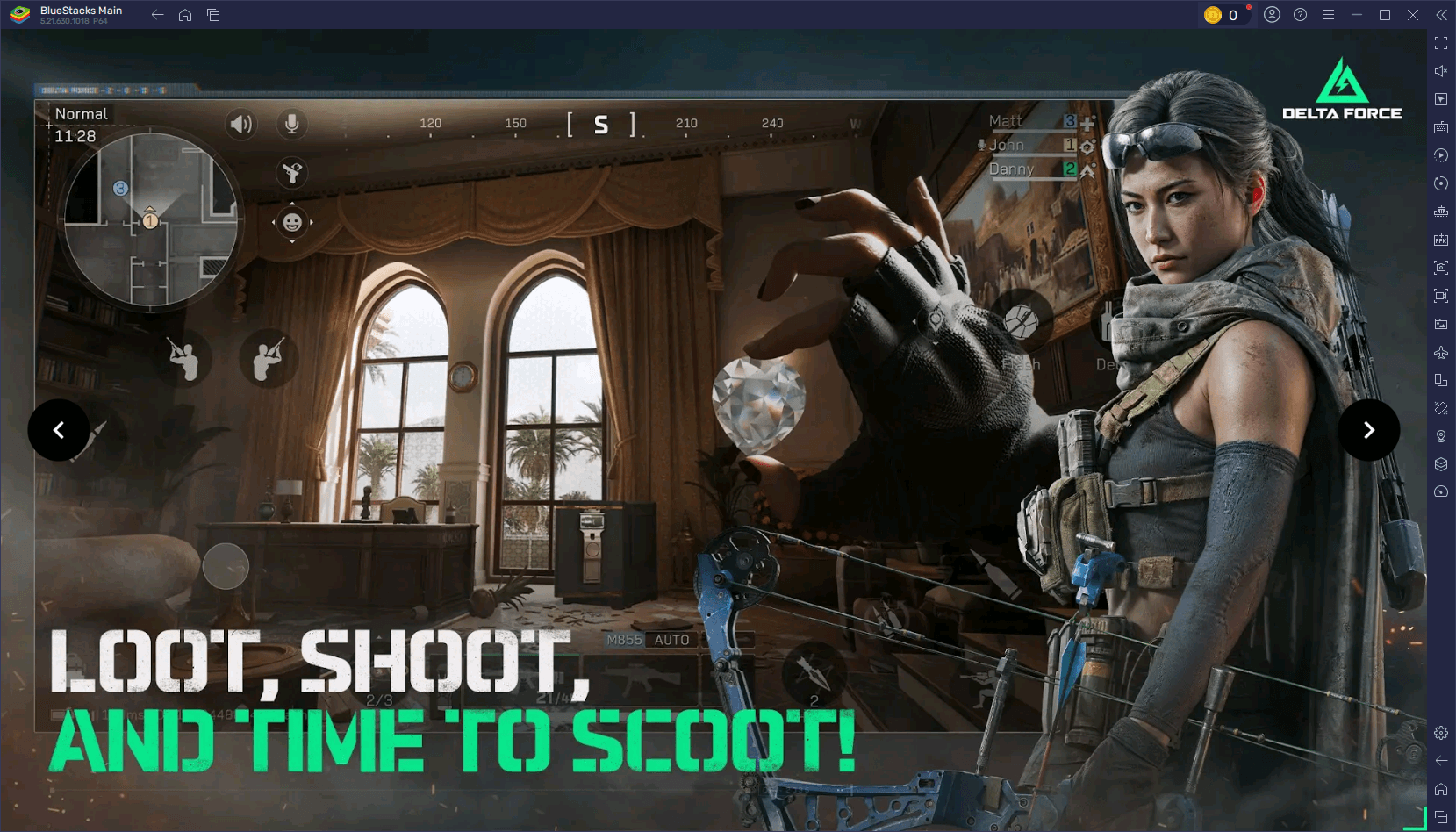DLSS: Enhancing Gaming Performance Explained
Nvidia's DLSS, or Deep Learning Super Sampling, has revolutionized PC gaming since its introduction in 2019. This powerful technology significantly enhances game performance and extends the life of Nvidia's graphics cards, provided you're playing one of the many games that now support it. With ongoing updates and enhancements, DLSS has evolved, impacting its operation, effectiveness, and features across Nvidia's RTX graphics card generations. In this comprehensive guide, we'll delve into what DLSS is, how it functions, the differences between its versions, and why it's crucial for gamers, even if you're not currently using an Nvidia GPU.
Additional contributions by Matthew S. Smith.
What Is DLSS?
Nvidia's DLSS, or Deep Learning Super Sampling, is a proprietary technology designed to boost game performance and image quality. The term "Super Sampling" reflects its ability to upscale game resolutions intelligently. Utilizing a neural network trained on extensive gameplay data, DLSS achieves this without the performance hit typically associated with higher in-game resolutions.
Initially, DLSS focused on upscaling, but it has since expanded to include features like DLSS Ray Reconstruction, which enhances lighting and shadow quality using AI; DLSS Frame Generation and Multi Frame Generation, which use AI to insert frames and boost FPS; and DLAA (Deep Learning Anti-Aliasing), which applies AI-enhanced anti-aliasing for superior graphics beyond native resolution capabilities.
The most recognized feature of DLSS is Super Resolution, particularly beneficial when paired with ray tracing. In DLSS-supported games, you can select from modes such as Ultra Performance, Performance, Balanced, and Quality within the graphics settings. For instance, if you choose 4K resolution with DLSS Quality mode in Cyberpunk 2077, the game renders at 1440p, which DLSS then upscales to 4K. This results in a significantly higher frame rate than running at native 4K, thanks to the AI-driven upscaling.
DLSS's neural rendering marks a significant departure from older techniques like checkerboard rendering. It adds detail that might not be visible at native resolution and preserves details lost in other upscaling methods. However, it can also introduce artifacts like "bubbling" shadows or flickering lines, though these issues have been considerably mitigated with DLSS 4.
The Generational Leap: DLSS 3 to DLSS 4
With the RTX 50-series, Nvidia introduced DLSS 4, which upgrades the AI model to a Transformer Neural Network (TNN), enhancing quality and capabilities. Previously, DLSS 3 and DLSS 3.5 used a Convolutional Neural Network (CNN), trained on vast datasets to analyze scenes and their elements. The transition to TNN allows for deeper scene analysis, doubling the parameters it can process, resulting in sharper gameplay, better detail retention, and reduced artifacts.
DLSS 4's TNN also revolutionizes frame generation. While DLSS 3.5 inserted one artificial frame between two rendered frames, DLSS 4's Multi Frame Generation can produce up to four artificial frames per rendered frame, potentially quadrupling frame rates. To mitigate concerns about input lag, Nvidia integrates Nvidia Reflex 2.0, which significantly reduces latency.
Despite these advancements, DLSS Frame Generation can sometimes exhibit minor ghosting behind moving objects, particularly at higher settings. Nvidia advises adjusting frame generation to match your monitor's refresh rate to avoid screen tearing and visual artifacts.
Even without an RTX 50-series, you can benefit from the new TNN model through the Nvidia App, which allows you to use it for DLSS Super Resolution and DLSS Ray Reconstruction, and enables DLSS Ultra Performance mode and DLAA in games that don't natively support these options.
Why Does DLSS Matter for Gaming?
DLSS is a pivotal technology in PC gaming, particularly for those with mid-range or lower-performance Nvidia GPUs. It enables higher graphics settings and resolutions, extending the life of your GPU. With the rising cost of graphics cards, DLSS offers a cost-effective way to maintain playable frame rates by adjusting settings or performance modes.
DLSS has set a new standard in PC gaming, prompting competitors AMD and Intel to develop their own upscaling technologies, AMD FidelityFX Super Resolution (FSR) and Intel Xe Super Sampling (XeSS). While Nvidia's DLSS 4 offers superior image quality and multi-frame generation, AMD and Intel's solutions provide viable alternatives.
Nvidia DLSS vs. AMD FSR vs. Intel XeSS
Nvidia's DLSS faces competition from AMD's FidelityFX Super Resolution (FSR) and Intel's Xe Super Sampling (XeSS). DLSS 4's edge lies in its advanced AI capabilities, offering crisper images and more consistent performance with fewer artifacts. However, DLSS is exclusive to Nvidia GPUs and requires game developer implementation, unlike AMD's FSR, which enjoys broader compatibility.
Conclusion
Nvidia's DLSS continues to evolve, promising ongoing improvements and a significant impact on gaming experiences. While not without flaws, it offers impressive performance and longevity for GPUs. With competitors like AMD and Intel also advancing their technologies, choosing the right GPU involves balancing cost, features, and game compatibility. DLSS remains a cornerstone in the world of PC gaming, pushing the boundaries of what's possible with intelligent AI-driven graphics enhancements.
-
1

GTA 6 Set for Fall 2025 Release, CEO Confirms
Apr 03,2025
-
2

First ALGS in Asia Emerges in Japan
Jan 19,2025
-
3

Introducing the Ultimate Guide to Seamless Character Swapping in Dynasty Warriors: Origins
Feb 25,2025
-
4

Roblox: CrossBlox Codes (January 2025)
Mar 04,2025
-
5
![Roblox Forsaken Characters Tier List [UPDATED] (2025)](https://img.jdzca.com/uploads/18/17380116246797f3e8a8a39.jpg)
Roblox Forsaken Characters Tier List [UPDATED] (2025)
Mar 05,2025
-
6

Max Hunter Rank in Monster Hunter Wilds: Tips to Increase
Apr 04,2025
-
7

Cute mobs in Minecraft: pink pigs and why they are needed
Mar 06,2025
-
8

Capcom Spotlight Feb 2025 Showcases Monster Hunter Wilds, Onimusha and More
Apr 01,2025
-
9

Gwent: Top 5 Witcher Decks (2025 Update)
Mar 13,2025
-
10

Delta Force Mobile: Beginner's Guide to Getting Started
Apr 23,2025
-
Download

Portrait Sketch
Photography / 37.12M
Update: Dec 17,2024
-
Download

Friendship with Benefits
Casual / 150.32M
Update: Dec 13,2024
-
Download
![[NSFW 18+] Sissy Trainer](https://img.jdzca.com/uploads/16/1719638919667f9b874d57e.png)
[NSFW 18+] Sissy Trainer
Casual / 36.00M
Update: Dec 11,2024
-
4
F.I.L.F. 2
-
5
슬롯 마카오 카지노 - 정말 재미나는 리얼 슬롯머신
-
6
Pocket Touch Simulation! for
-
7
Shuffles by Pinterest
-
8
Life with a College Girl
-
9
Chubby Story [v1.4.2] (Localizations)
-
10
Hunter Akuna














